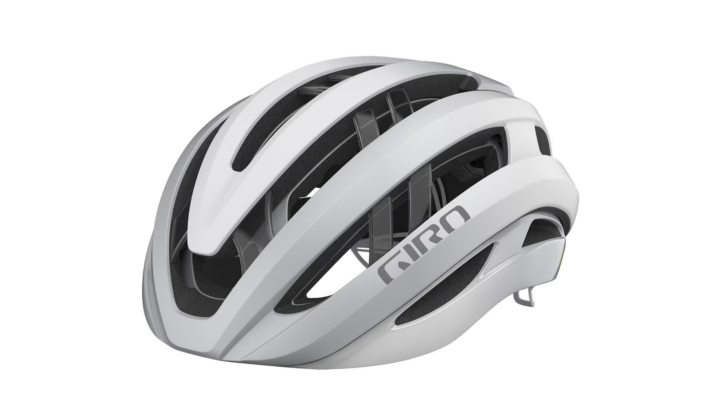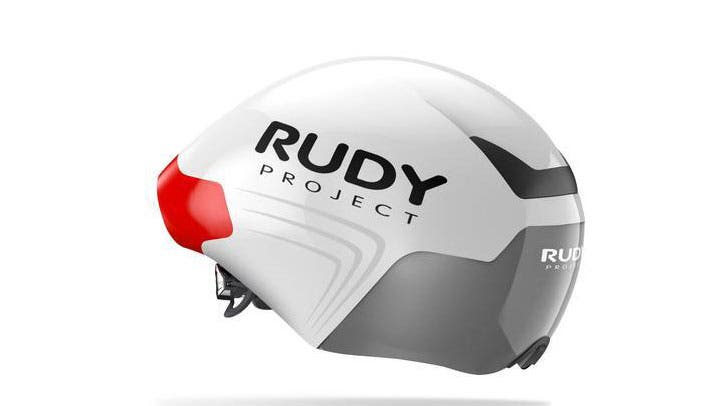If you buy through our links, we may earn an affiliate commission. This supports our mission to get more people active and outside.Learn about Outside Online's affiliate link policy
Ask A Gear Guru: What Do All of Those Helmet Certifications Mean?

If you’re a triathlete, or a bike racer, or you value your skull at all, knowing that your helmet is certified by a safety organization is important. In fact, if you’re competing at a triathlon in the U.S. or most parts of Europe, it’s actually a rule that you have a specific one of those certification stickers on the inside of your brain bucket. No helmet certification sticker? No race.
As just about every helmet manufactured in the U.S. from a major brand is CPSC certified (more on what that means below), if you buy a helmet on the internet, there’s a slight chance your new lid could be missing the proper certification. If you go to race in Europe, you might need a different certification; if you’re not from the U.S., and you come here to race, there’s a chance you could be turned away at transition. Be sure you check before you go.
We’ve checked in with the folks behind Giro and Bell’s test lab, The Dome, to bring you the important info on helmet certification.
Why so many helmet certifications?
There are dozens of helmet standards across the spectrum of action sports. Different types of helmets help to protect you from different types of impacts. A bicycle crash, for instance, is entirely different than a snowboarding spill. It follows then that bicycle and snowboard helmets should offer relevant levels of protection and live up to relevant standards. Simple.
Here’s where it gets complex. Different countries and organizations also have different safety standards for the same kinds of helmets. There are, for example, 10 different bicycle helmet standards alone.
Why do helmet certifications matter?
Helmet safety standards dictate everything – from how much of your head the helmet covers to what kinds of labels cover the helmet’s own packaging. But when most people think about helmet standards, they want to know just one thing: How big of a hit can this helmet take before I get hurt? They’re interested in the impact standards.
Helmets help to protect your brain by reducing the amount of energy transferred to your brain during a crash or fall. That energy or force is generally measured in gravitational force or G’s. Experience a force greater than 300 G’s and you’re considered likely to suffer significant head trauma or death. That’s why most helmet standards today require that your helmet transmit no more than 300 G’s to your brain during an impact.
Below, we’ve outlined four of the most important standards for cyclists, and then given two picks for our favorite new (CPSC-certified) helmets.
What are the major helmet certification markings and who oversees them?
CPSC / CPSC 1203 / Consumer Product Safety Commission
Since March 10, 1999, all bicycle helmets sold in the United States have been required to pass the CPSC helmet standard. Prior to that point, several popular helmet standards (ANSI, ASTM, and Snell) floated about, each with substantially different testing regimens. In the United States, helmet manufacturers could choose to meet any, all, or none of those standards.
All of this proved confusing to consumers. Congress passed legislation in 1994 (the Children’s Bicycle Helmet Safety Act), calling for all cycling helmets to meet a single, national standard. Other cycling helmet standards still exist, but now U.S. consumers are guaranteed a common performance threshold with any bike helmet purchased in the United States. CPSC is also accepted in Canada, China, Taiwan, Japan, and Brazil. CPSC subjects helmets to slightly greater impacts than both EN-1078 and AS/NZ standards. Sometimes you’ll hear about CPSC 1203, the “1203” here simply denotes the part of the CPSC regulations where you can find the safety standards themselves.
EN-1078 / CE EN 1078 / The European Cycling Standard
Created in 1997, the EN-1078 standard was approved in 2012 by the European Committee for Standardization (or “CEN”) for all cycling, skateboarding and roller skating helmets sold in 32 European nations. In other words, EN-1078 is a commonly recognized standard. Any time you see CE EN 1077, you’re looking at a ski or snowboard helmet.
EN-1078 permits lighter, thinner helmets than some of the other standards because it subjects helmets to impacts from lower heights than either Snell or CPSC. It’s not as simple as that, though, as EN-1078 does require a lower test line than Snell and CPSC, which may require that the helmet provide slightly more coverage. [The test line is a line drawn around the helmet, below which the helmet is not tested.] Helmets that transmit more than 250 G’s to the headform during impact testing fail EN-1078. The other standards mentioned here allow for up to 300 G’s.
ASTM F1952 / The Downhill Mountain Biking Standard
This downhill mountain biking helmet standard features greater impact energies and drop heights on the hemi and curbstone anvils than the CPSC or the Snell B-95 standard. [Part of testing requires weighted helmets get dropped from a prescribed height above a steel anvil onto the anvil.] This standard also features a lower test line on the sides and back of the helmet than most other bike helmet standards. While chin bars are not required to pass this test, if a helmet does feature a chin bar, the bar must pass a deflection test as well.
SNELL B-95
Snell B-95 subjects helmets to harder hits from greater heights than the CPSC and EN-1078 standards. Snell B-95 also features a slightly lower test line than the CPSC standard, requiring protection over a greater area of the helmet.
While this standard has been in existence longer than other cycling helmet standards profiled here, relatively few helmets meet Snell’s 1995 “B-95” standard. This is generally true for at least two reasons: (1) B-95 is a completely voluntary standard and (2) Helmets that pass B95 are generally bulkier and less attractive.
Now that you’re an expert on helmet certifications, let’s take a look at two of our favorite cycling helmets for triathlon.
Giro Aries Spherical Helmet
Weight: 275g (size medium)

This new lid from Giro hits the helmet trifecta: Lightweight at less than 300g, extra protection, and excellent ventilation. Usually you get two, but not all three. The Aries Spherical not only has standard MIPS protection that reduces rotational forces – lessening the concussive effects of common impacts – but it also has “spherical” technology that creates a ball-and-socket shape to prevents hard plastic or slip planes from contacting your head. Eleven vents and internal air channels do a great job of keeping airflow moving, something that’s rare in MIPS-equipped helmets.
Rudy Project Wing
320g (S/M without visor and vent covers)

This award-winning helmet from Rudy Project not only ticks the boxes for sleek design, but it’s also incredibly fast: Created to work in more head positions than most other tailed aero helmets, the well-loved Wing has been remade this year with a host of features. The decent-for-aero vents can be covered with a magnetic vent cover, and the super-sleek (and super large) visor also attaches with the help of magnets. Even the weight on the new Wing isn’t too bad – allowing for a more comfortable head position while riding in your aero position.